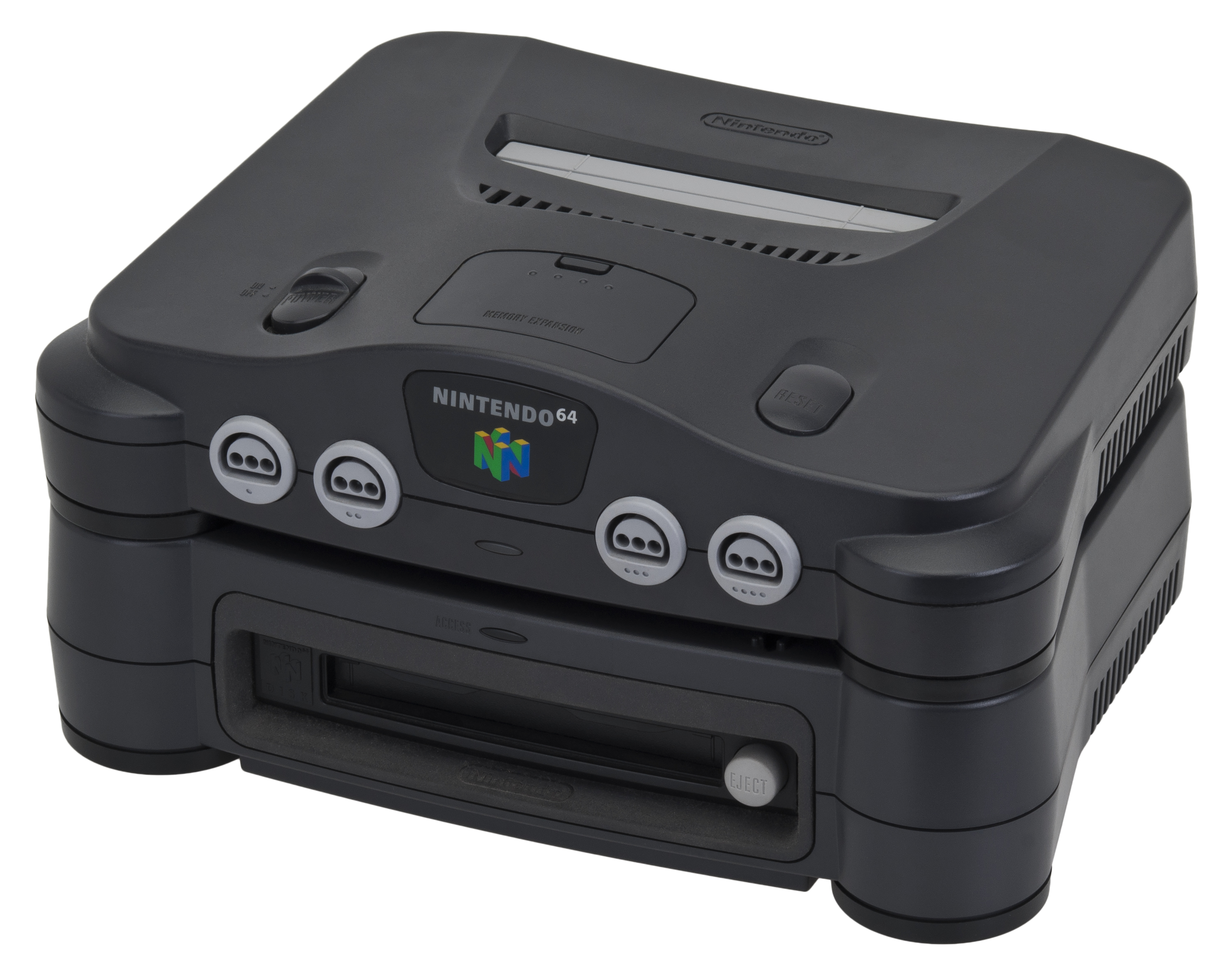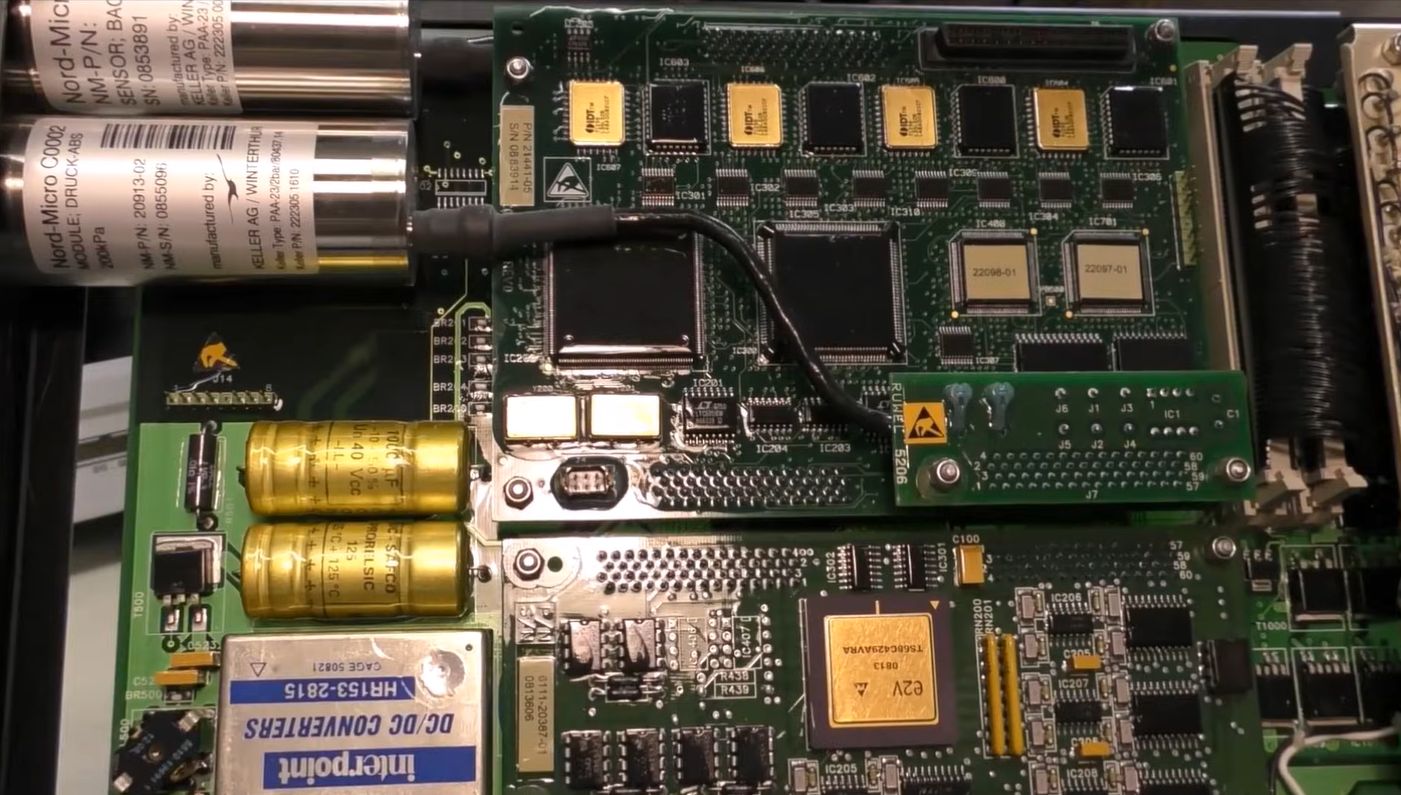Feed SparkFun Electronics [copy] http://www.sparkfun.com/feeds/news has loading error: cURL error 22: The requested URL returned error: 405
Feed The RFID Weblog [copy] http://www.rfid-weblog.com/index.rss has loading error: cURL error 22: The requested URL returned error: 404 Not Found
Feed tqfp.org [copy] http://tqfp.org/rss/ has loading error: A feed could not be found at `http://tqfp.org/rss/`; the status code is `200` and content-type is `text/html; charset=utf-8`
Exploring Nintendo 64DD Code Remnants in Ocarina of Time
https://invidious.privacyredirect.com/watch?v=2xyk-EozojY

What if you took a Nintendo 64 cartridge-based game and allowed it to also use a large capacity magnetic disc format alongside it? This was the premise of the Nintendo 64DD peripheral, and the topic of a recent video by [Skawo] in which an archaeological code dig is performed to see what traces of the abandoned product may remain.
The 64DD slots into the bottom of the console where the peripheral connector is located, following which the console can read and write the magnetic discs of the 64DD. At 64 MB it matched the cartridge in storage capacity, while also being...
Are We Ready for AR Smart Glasses Yet?
https://invidious.privacyredirect.com/watch?v=C0Iwq2auR_g

In a recent article from IEEE Spectrum, [Alfred Poor] asks the question what do consumers really want in smart glasses? And are you finally ready to hang a computer screen on your face?
[Alfred] says that since Google Glass was introduced in 2012, smart glasses haven’t yet found their compelling use-case. Apparently it looks like while virtual reality (VR) might be out, augmented reality (AR) might be in. And of course now we have higher levels of “AI” in the mix, whatever that means.
According to the article in the present day there are two competing visions of what smart glasses might...
Allwinner V861 dual-core 64-bit RISC-V AI Camera SiP features 128MB DDR3L, 4K H.265/H.264 video encoder

Allwinner V861 is a new dual-core 32-bit/64-bit RISC-V C907 system-in-package (SiP) with 128MB on-chip DDR3L and designed for 4K AI camera applications with a 1 TOPS AI NPU. The chip also features a 32-bit RISC-V E907 low-power core, a 4Kp25 H.264/H.265 video encoder, a 1080p60 JPEG video decoder and encoder, MIPI CSI and parallel camera interfaces, audio codec with input and output interfaces, Fast Ethernet, USB 2.0, and a range of digital and analog I/Os. Allwinner V861M3-XXX specifications: CPU Dual-Core RISC-V XuanTie C907 (RV64GCBV/RV32GGCBV) clocked up to 1.4GHz with RVV 1.0 extensions Single-core RISC-V XuanTie E907 (RV32IMAFC) clocked up to...
Quote Printer Keeps Receipts
https://invidious.privacyredirect.com/watch?v=F5_00bj8dHo

In the world of social media, “keeping receipts” refers to the practice of storing evidence that may come in handy for a callout post at a later date. For [Teddy Warner], though, it’s more applicable to a little printer he whipped up to record the very best banter from his cadre of friends.
[Teddy’s] idea was simple. He hoped to capture amusing or interesting quotes his friends made in his apartment, and store them in a more permanent form. He also wanted to allow his friends to do the same. To that end, he whipped up a small locally-hosted web interface...
M5Stack CoreS3 Thread BR Targets Matter and Thread IoT Gateways
M5Stack has expanded its lineup with the CoreS3 Thread BR, a compact Thread Border Router kit designed for Matter- and Thread-based IoT deployments. The platform combines the CoreS3 controller with a dedicated IEEE 802.15.4 radio module in a DIN-rail-mountable enclosure for smart home, building automation, and low-power sensor networks. The system uses an ESP32-S3 application […]
FPGA Dev Kit Unofficially Brings MSX Standard Back
https://invidious.privacyredirect.com/watch?v=Iy7R29bjuJ8

In the 1980s there were an incredible number of personal computers of all shapes, sizes, and operating system types, and there was very little interoperability. Unlike today’s Windows-Mac duopoly, this era was much more of a free-for-all but that didn’t mean companies like Microsoft weren’t trying to clean up all of this mess. In 1983 they introduced the MSX standard for computers, hoping to coalesce users around a single design. Eventually it became very successful in Japan and saw some use in a few other places but is now relegated to the dustbin of history, but a new FPGA kit...
Apollo Lunar Module Thrust Meter Lives Again
https://invidious.privacyredirect.com/watch?v=H3bxe7gynQk

[Mike Stewart] powers up a thrust meter from an Apollo lunar module. This bit of kit passed inspection on September 25, 1969. Fortunately [Mike] was able to dig up some old documentation which included the pin numbers. Score! It’s fun to see the various revisions this humble meter went through. Some of the latest revisions are there to address an issue where there was no indication upon failure, so they wired in a relay which could flip a lamp indicator if the device lost power.
This particular examination of this lunar thrust module is a good example of how a system’s...
MYIR SoM Leverages Zynq UltraScale+ with Arm and FPGA Integration
MYIR has announced the MYC-CZU3EG-V3, an updated SoM built around the AMD Zynq UltraScale+ ZU3EG MPSoC. The module integrates application-class Arm processing, real-time control cores, and FPGA fabric in a compact form factor targeting industrial automation, machine vision, edge computing, aerospace, and telecommunications systems. The MYC-CZU3EG-V3 combines a quad-core Arm Cortex-A53 application processor running at […]
Teardown of Boeing 777 Cabin Pressure Control System
https://invidious.privacyredirect.com/watch?v=rsCxEcR-AYE

Modern passenger airliners are essentially tubes-with-wings, they just happen to be tubes that are stuffed full with fancy electronics. Some of the most important of these are related to keeping the bits of the tube with humans inside it at temperatures and pressures that keeps them alive and happy. Case in point the Boeing 777, of which [Michel] of Le Labo de Michel on YouTube recently obtained the Cabin Pressure Control System (CPCS) for a teardown.
The crucial parts on the system are the two Nord-Micro C0002 piezo resistive pressure transducers, which measure the pressure inside the aircraft. These sensors, one...
JeffGeerling.com has been Migrated to Hugo

Since 2009, this website has run on Drupal. Starting with Drupal 6, and progressing through major site upgrades and migrations to 7, 8, 9, and 10, I used the site as a way to dogfood the same CMS (Content Management System) I used in my day job for over a decade.
But as time progressed—especially after completing a grueling upgrade from Drupal 7 to 8—my enthusiasm for maintaining what's now a more enterprise-focused Digital Experience Platform or 'DXP' for a personal blog has waned.